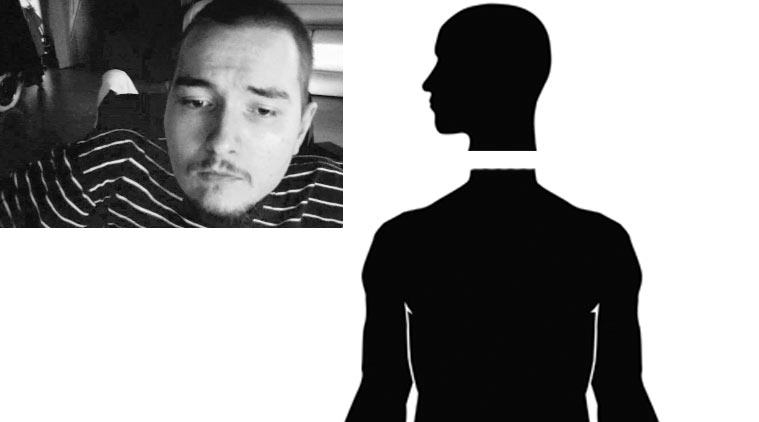- India
- International
Old head on new body
Italian neurosurgeon Sergio Canavero is set to perform the world’s first head transplant — on 30-year-old Russian Valery Spridinov (inset), who suffers from a genetic muscle-wasting disease.
 Italian neurosurgeon Sergio Canavero is set to perform the world’s first head transplant — on 30-year-old Russian Valery Spridinov (inset), who suffers from a genetic muscle-wasting disease. (Graphic by: Mridul)
Italian neurosurgeon Sergio Canavero is set to perform the world’s first head transplant — on 30-year-old Russian Valery Spridinov (inset), who suffers from a genetic muscle-wasting disease. (Graphic by: Mridul)Yours is a short, lean body. But when you wake up after a long slumber, you find your head resting on a tall, broad body. An idea even a bad sci-fi movie won’t take? But Italian neurosurgeon Sergio Canavero is set to perform the world’s first head transplant — on 30-year-old Russian Valery Spridinov, who suffers from a genetic muscle-wasting disease.
HOW?
In his paper published in Surgical Neurology International, and in an interview to New Scientist, Canavero explained his surgery:
* The recipient’s head and the donor’s body are cooled to extend the time their cells can survive without oxygen.
* The tissue around the neck is dissected and the major blood vessels are linked using tiny tubes.
* The spinal cords of donor and recipient are “severed” with “a nanoknife made of a thin layer of silicon nitride with a nanometer sharp cutting edge”. This step is called “surgical beheading”.

* The recipient’s head is moved onto the donor body and the two ends of the spinal cord are fused together with a chemical called polyethylene glycol.
* The nerves are aligned, and the muscles and blood supply sutured.
* The recipient is kept in coma for 3-4 weeks to prevent movement.
* Electrodes are implanted to provide regular electrical stimulation to the spinal cord in order to strengthen new nerve connections.
* The 36-hour surgery, to be done in 2017, would need 150 doctors and nurses.
TESTED ON ANIMALS
Surgeons have tried head transplant on animals in the past:
* In 1954, Russian surgeon Vladimir Demikhov transplanted a puppy’s head and forelegs onto the back of a larger dog. Demikhov conducted several further attempts but the dogs only survived between two and six days.
* In 1970, a team led by US surgeon Robert White transplanted the head of a monkey onto the body of another. Since the spinal cords weren’t joined, the monkey couldn’t move its body, though it was able to breathe with artificial assistance. The monkey lived for nine days until its immune system rejected the head.
* Last year, a team of doctors led by Xiao-Ping Ren of Harbin Medical University in China performed a basic head transplant in a mouse. Ren has said he will attempt Canavero’s method in the next few months on mice and monkeys.
THE RISKS
* What if the donor body’s immune system rejects the alien head of Spridinov? William Mathews, chairman of the American Academy of Neurological and Orthopedic Surgeons, or AANOS, thinks that’s a “manageable” problem, as drugs are, in any case, used to manage the acceptance of large amounts of tissue, such as a leg or lung. “The system we have for preventing immune rejection is well established,” he told New Scientist.
* But Dr Arthur Caplan, director of medical ethics at NYU Langone Medical Center, in an interview to CNN, said that the high levels of anti-rejection medications put patients at risk for cancer and kidney problems. Caplan said he has seen face transplant patients not “always getting full function of their new organ”. “It’s not like you can unscrew your head and put it on someone else,” he said.
* Calling Canavero “nuts” and his proposed surgery a “big PR stunt”, Caplan said more trials need to done on animals before experimenting on humans.
* Caplan suggested Canavero should focus on fixing spinal cords of paralysed patients “before transplanting whole bodies”. “Their bodies would end up being overwhelmed with different pathways and chemistry than they are used to and they would go crazy.”
* Dr Hunt Batjer, president of the American Association for Neurological Surgeons, doubts Canavero’s method itself, specially the fusion of the spinal cords. In an interview with CNN, he conceded that the airway, the spine, the major veins and arteries can all be put back together, but not the spinal cord. He says that could lead to inability to move or breathe. “I would not wish this on anyone, I would not allow anyone to do it to me, there are a lot of things worse than death,” he said.
HEAD OF A, BODY OF B
* So, you’ve been living with a certain body since birth, and though your “new” body has given you a fresh lease of life, it isn’t “your body” after all. In his paper, Canavero has admitted that the patient may have “identity issues” with a new body. And that’s also where the question of ethics arises. “The real stumbling block” in finding a country to approve such a transplant, said Canavero, “is ethics”. He hopes to get a buy-in this June when he presents his plan to the AANOS, at its annual conference.
* Patricia Scripko, a neurologist and bioethicist at the Salinas Valley Memorial Healthcare System in California, says how you see the surgery in ethical terms depends on how you define human life. “I believe that what is specifically human is held within the higher cortex. If you modify that, then you are not the same human and you should question whether it is ethical. In this case, you’re not altering the cortex,” she told New Scientist.
* Many cultures though, she added, would not approve of the surgery because of their belief in a human soul that is not confined to the brain.
* What if someone is growing older and wants a younger body? Scripko sees such cosmetic use as unlikely. “If a head transplant were ever to take place, it would be very rare. It’s not going to happen because someone says ‘I’m getting older, I’m arthritic, maybe I should get a body that works better and looks better’,” she said.
* Canavero, however, told CNN that he has “a stack of emails and letters” from people who want this procedure. “Many of them are transsexuals who want a new body,” he said. But he insists the first patients will be like Spridinov, who are suffering from a muscle-wasting disease.
Compiled by Irena Akbar.
More Tech
Apr 20: Latest News
- 01
- 02
- 03
- 04
- 05







































